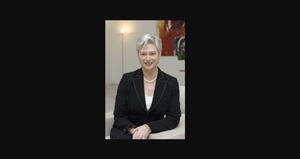I applaud the progress of ITER
Maria van der Hoeven took over as Executive Director of the International Energy Agency (IEA) on 1 September 2011. Previously, Ms. Van der Hoeven served as Minister of Economic Affairs of the Netherlands from February 2007 to October 2010. To many people within the fusion community she is not an unknown name as she played an important role during the Dutch presidency of the Council of the European Union when the ITER site negotiations were at a critical stage. Now—as ITER is under construction—we asked the prominent proponent of fusion about her opinion of the ITER Project and its potential.
What ties exist between IEA and ITER?
To achieve energy security, economic growth and environmental protection, the IEA has encouraged and supported international collaborative research, development and deployment (RDD&D) across the mix of energy technologies since its founding. The IEA thus supports Member governments, non-Member participants and industrial partners to share resources and multiply results.
The IEA Fusion Power Co-ordinating Committee (FPCC) provides a platform for stakeholders to share results of fusion activities worldwide. The ITER project, the International Atomic Energy Agency, the European Commission (EURATOM), the International Tokamaks Physics Activity (ITPA), and the Nuclear Energy Agency (experiments database) are among these participants.
The FPCC also oversees the activities of eight fusion Implementing Agreements, or international collaborative working groups, that examine specific policy and technical aspects of fusion power including:
- Co-operation on Tokamak Programs
- Environmental, Safety and Economic Aspects of Fusion Power
- Fusion Materials
- Nuclear Technology of Fusion Reactors
- Plasma-Wall Interaction
- Reversed Field Pinches
- Spherical Tori
- Stellarator-Heliotron Concept
Our two organizations are also linked by individuals. Three participants from the IEA fusion community have been named to leadership positions for ITER. They include the ITER Director-General Osamu Motojima, the ITER Deputy Director-General Rich Hawryluk, and the Chair of the ITER Council Hideyuki Takatsu. I personally look forward to increasing the contacts between our organizations, and hope to make a working visit myself to Cadarache in the coming year.
As Minister for Research in the Netherlands you played a vital role in the ITER site negotiations. Despite significant challenges since then, the ITER project is now under construction.
I am pleased to see that the ITER Project has indeed advanced and that steps have been taken recently to address budgetary and management issues. Since taking up my role as Executive Director at the IEA, my priorities have been to establish a strategic vision and implementation plan for this energy agency. Working to leverage the IEA's assets to bolster its impact worldwide—while delivering high quality to Member governments within stringent resource constraints—has been at the heart of my task. I therefore understand the challenges that ITER faces, and I applaud its progress.
"Fusion has the potential to be a game-changer"
The IEA actively supports clean technology deployment through analysis and reporting such as our flagship Energy Technology Perspectives publications, our input to the Clean Energy Ministerial, and other work. We also support the spread of information via the Energy Technology Network and the International Low-Carbon Energy Technology Platform. These products and platforms can help to raise awareness among both policy makers and stakeholders.
Nuclear fusion holds the promise of virtually inexhaustible, safe and emission-free energy. However the successful deployment of this technology still remains a long-term objective which will require sustained research and development efforts. Although significant work is ongoing in this area, IEA projections do not count on fusion reactors becoming available on a commercial basis within the time horizon considered in our World Energy Outlook.


